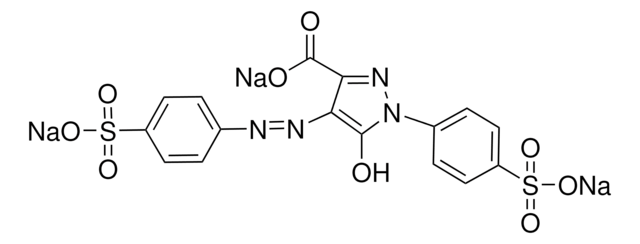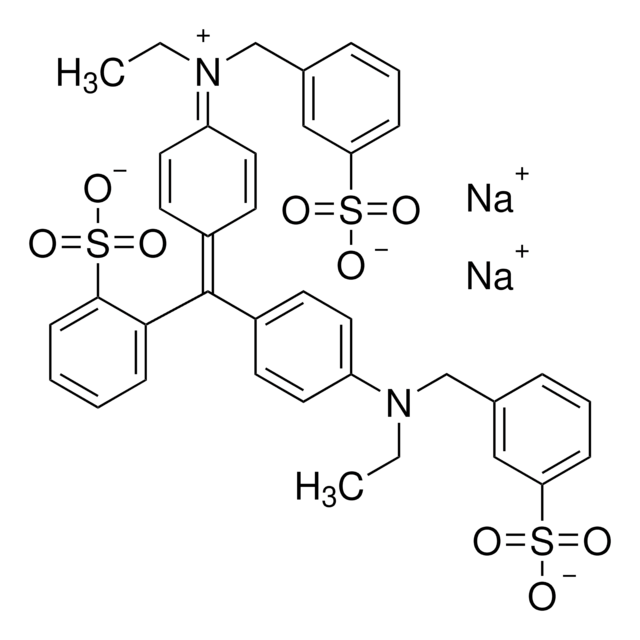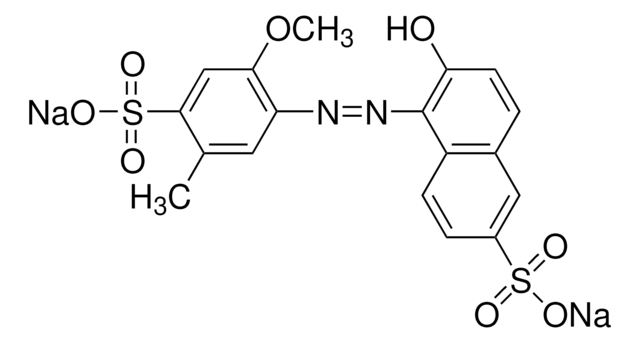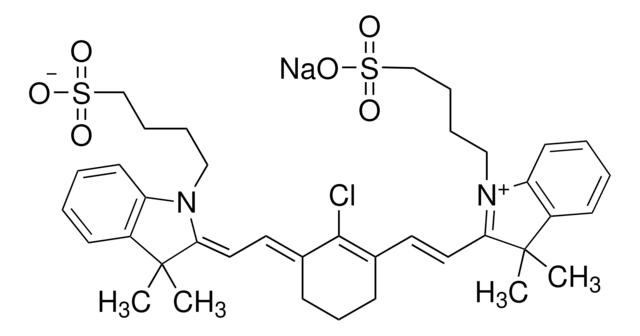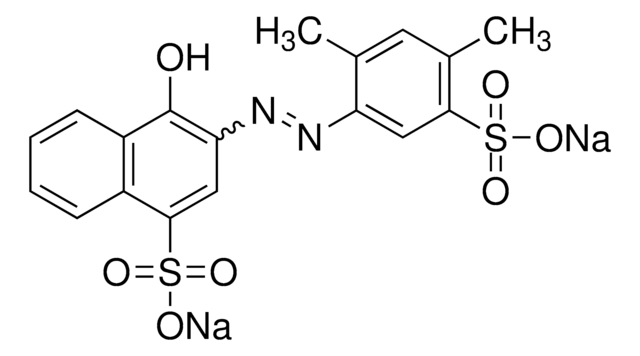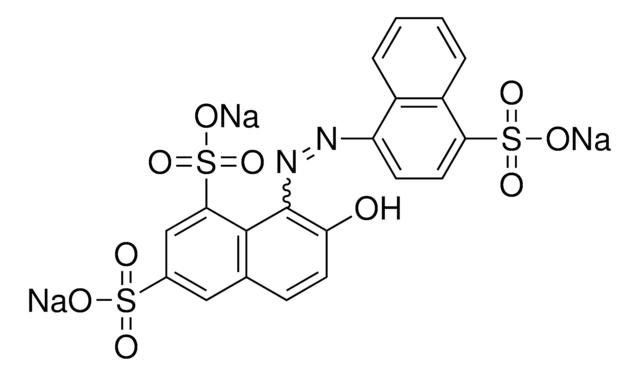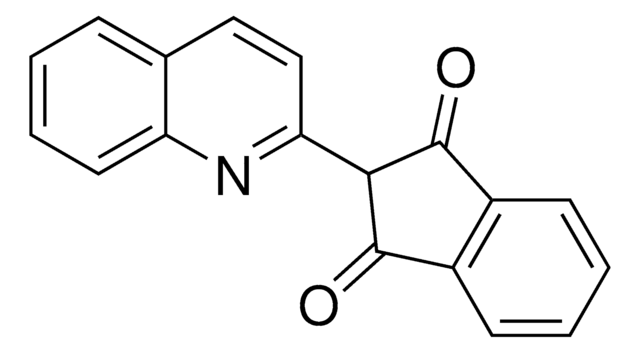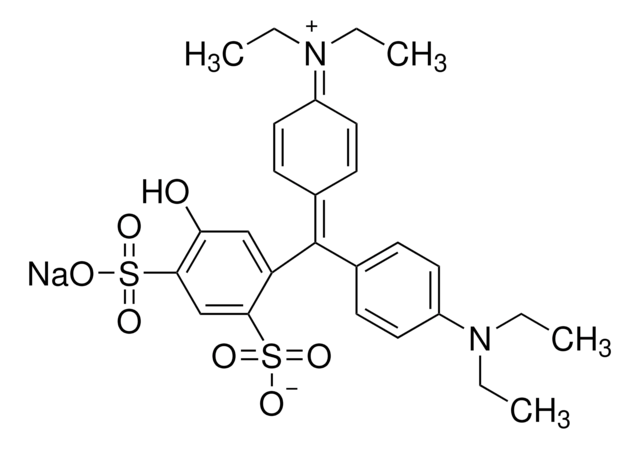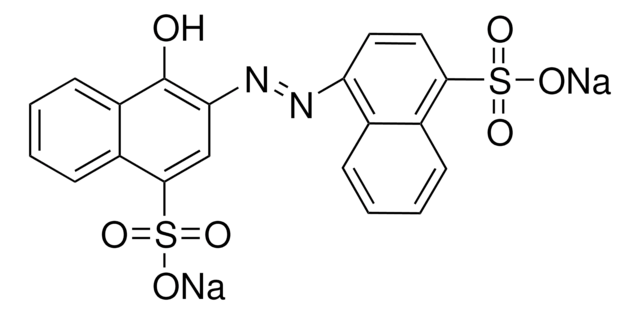T0388
Tartrazine
Dye content ≥85 %, Powder
Synonym(s):
Acid Yellow 23
About This Item
Recommended Products
product name
Tartrazine, Dye content ≥85 %
form
powder
Quality Level
composition
Dye content, ≥85%
technique(s)
titration: suitable
color
orange
solubility
H2O: 10 mg/mL, clear, yellow to orange
density
2.12 at 20 °C
εmax
435-500 at 425-429 nm in water
application(s)
diagnostic assay manufacturing
hematology
histology
storage temp.
room temp
SMILES string
[Na+].[Na+].[Na+].[O-]C(=O)C1=NN(c2ccc(cc2)S([O-])(=O)=O)C(=O)C1N=Nc3ccc(cc3)S([O-])(=O)=O
InChI
1S/C16H12N4O9S2.3Na/c21-15-13(18-17-9-1-5-11(6-2-9)30(24,25)26)14(16(22)23)19-20(15)10-3-7-12(8-4-10)31(27,28)29;;;/h1-8,13H,(H,22,23)(H,24,25,26)(H,27,28,29);;;/q;3*+1/p-3
InChI key
UJMBCXLDXJUMFB-UHFFFAOYSA-K
Looking for similar products? Visit Product Comparison Guide
General description
Application
The application of Tartrazine is seen in the phloxine-tartrazine procedure for cellular inclusions such as viral aggregates and eosinophil granules. It may be used as a substitute for orange G in a variant of Mallory′s trichrome, and in a methyl violet-tartrazine mixture to stain cryptosporidia in faecal smears and mucosal scrapings.
Storage Class Code
11 - Combustible Solids
WGK
WGK 1
Personal Protective Equipment
Certificates of Analysis (COA)
Search for Certificates of Analysis (COA) by entering the products Lot/Batch Number. Lot and Batch Numbers can be found on a product’s label following the words ‘Lot’ or ‘Batch’.
Already Own This Product?
Find documentation for the products that you have recently purchased in the Document Library.
Customers Also Viewed
Protocols
Separation of Tartrazine; Amaranth; Indigo carmine; New Coccine; Sunset Yellow FCF; Allura Red AC; Fast Green FCF; Erioglaucine disodium salt; Erythrosin B sodium salt; Phloxine B; Rose bengal
Our team of scientists has experience in all areas of research including Life Science, Material Science, Chemical Synthesis, Chromatography, Analytical and many others.
Contact Technical Service